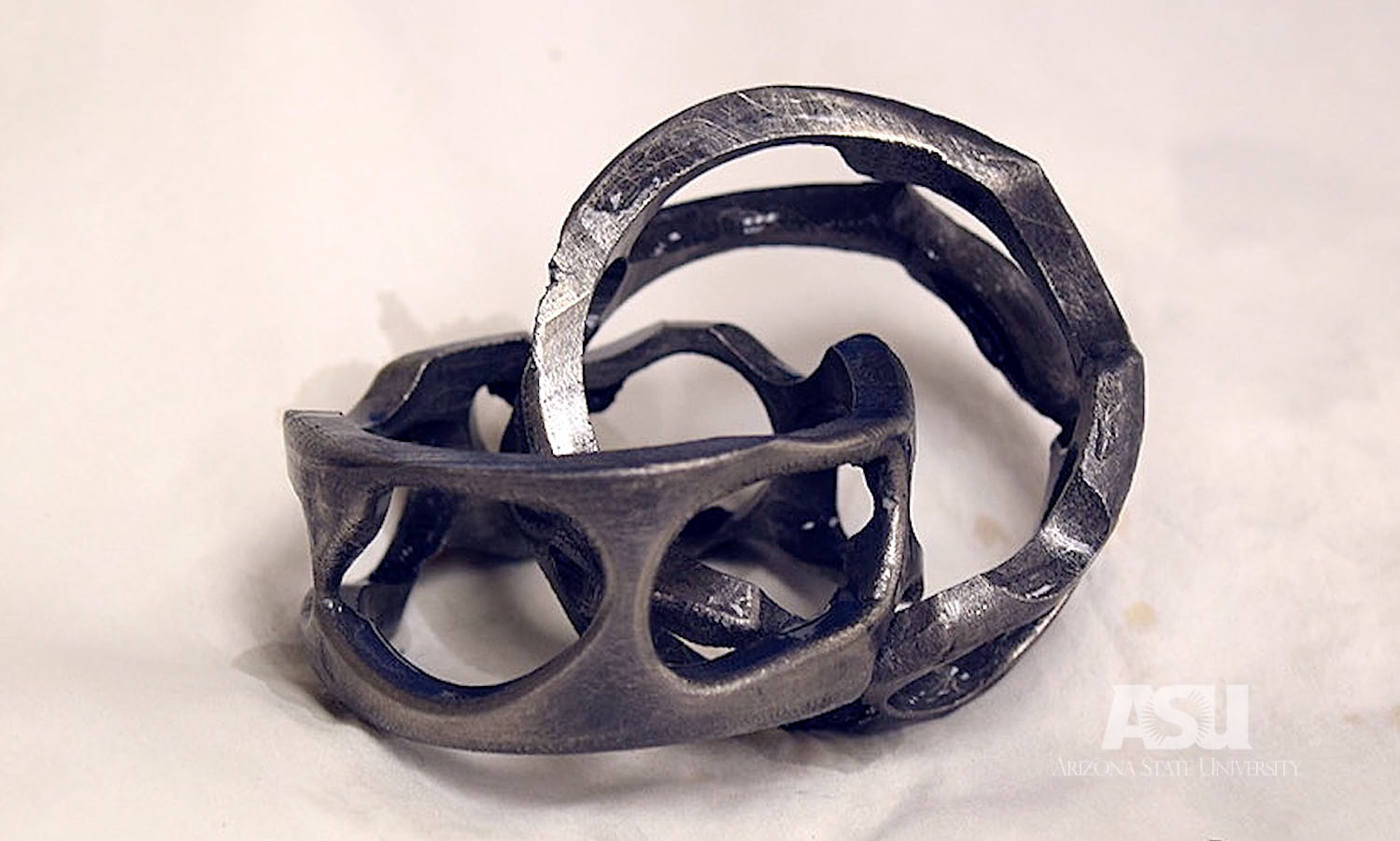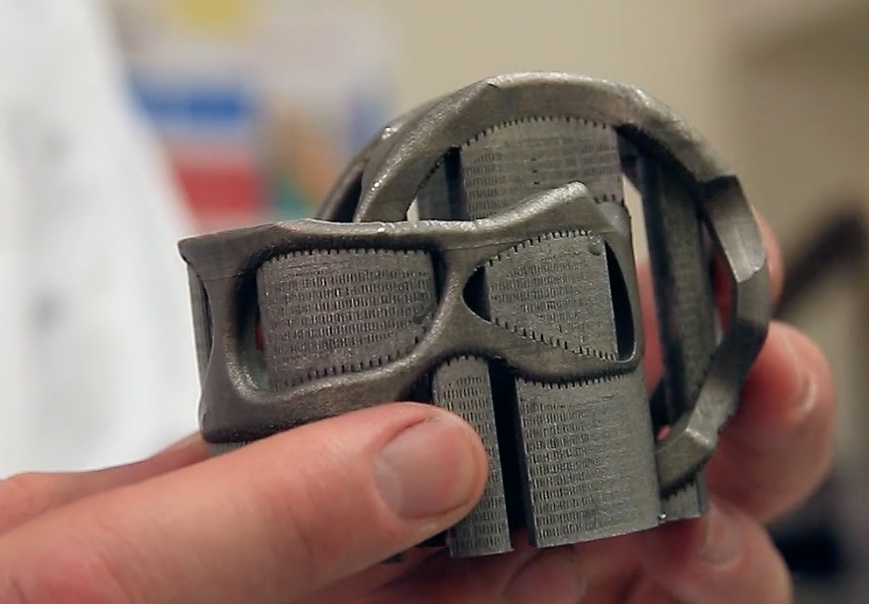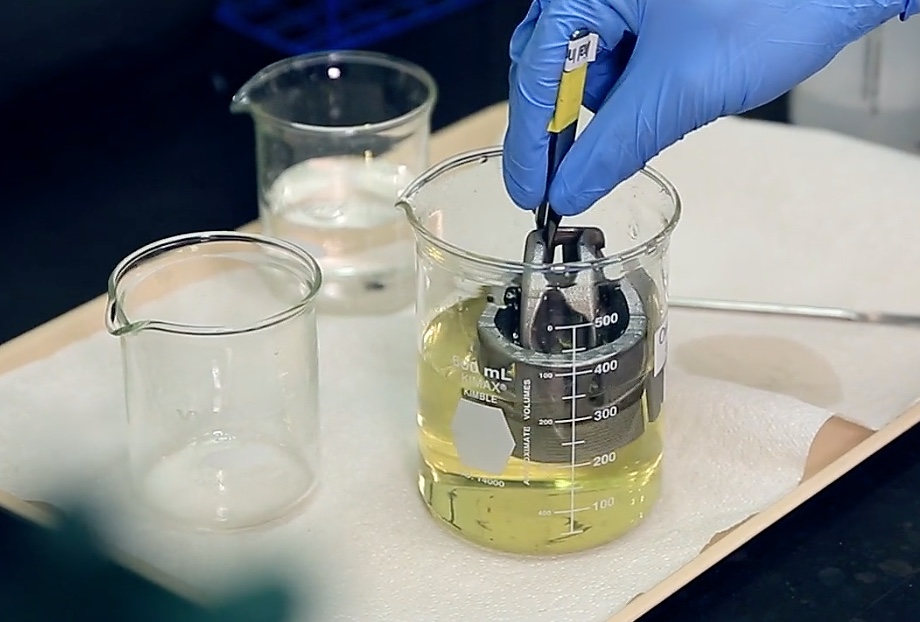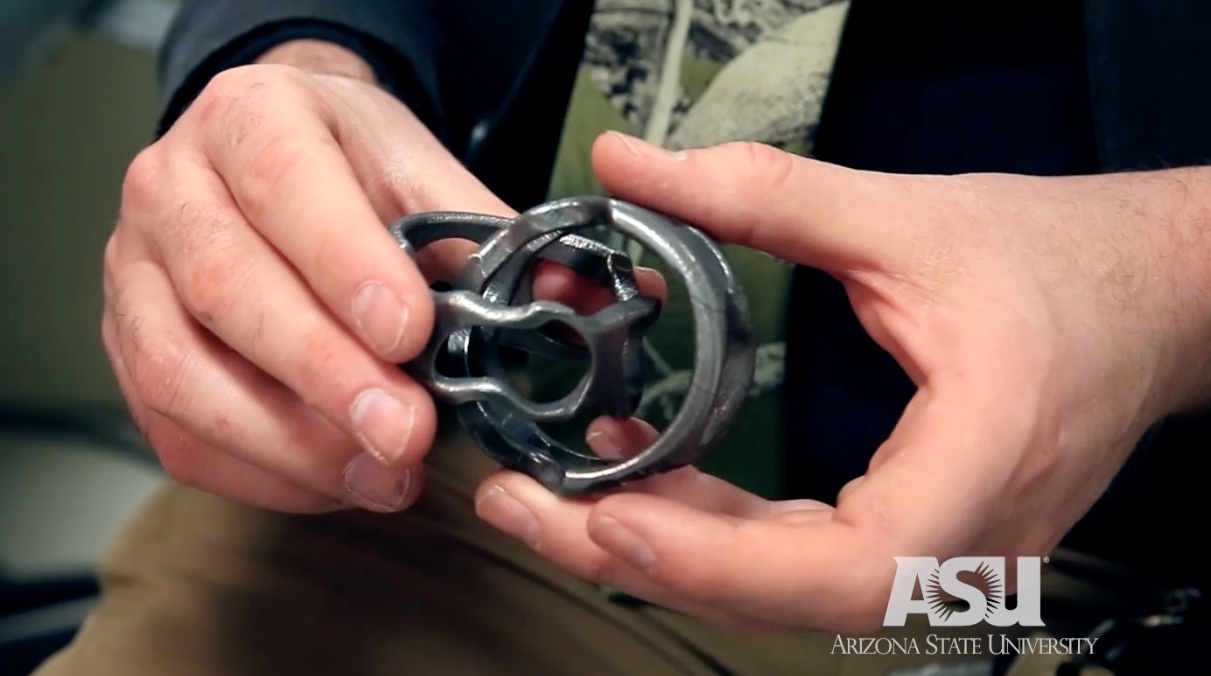Innovation in Metal 3D Printing: Dissolvable 3D Printed Supports
Posted By Eole Recrosio on May 31, 2017 | 0 comments
Did you try our online metal 3D printing services? If so, you may have experienced the complexity of 3D printing metal support structures. It is an essential element that directly affects the price of your 3D prints and which must be taken into account. To help you, we are developing the Agile Metal Technology (AMT) suite and its online tools that help you get the most of metal 3D printing. In this article, discover all you need to know about dissolvable 3D printed supports for metal additive manufacturing.
Metal 3D Printing technology overview
At Sculpteo, we are proud to offer one of the largest 3D printing range of materials and technologies with 4 different metal 3D printing technologies:
- DMLS. Direct Metal Laser Sintering is very similar to SLS but uses a fine metal powder (Stainless Steel or Titanium) to create mechanical 3D printed metal parts.
- SLM. Selective Laser Melting creates aluminum metal parts thanks to a fully melting process which is great for engineering pieces.
- Metal Binder Jetting is the fastest technology for metal 3D printing. It produces stainless steel parts infiltrated with bronze. This technology is also cheaper than the other metal technologies but is not well suited for technical parts. Moreover, you can apply plating (gold or nickel) to the object you 3D print with this process.
- Metal Casting is a hybrid metal 3D printing technology. It uses a wax 3D printed model which is then covered with a mold to create casted versions of your object. Available in Brass and Sterling silver, this technology is ideal for jewelry.
You can find more information about metal technologies and each material on the dedicated pages.
To learn more about metal 3D printing technologies, you can also download our free guide on metal 3D printing.
Supports for metal 3D Printing
One of the main issues regarding 3D printing is the need for support when creating overhangs and heavy structures. With the SLS technology, the powder is acting as a support and this is one of the reasons why our white plastic polyamide is fast and cheap to produce.
With DMLS or SLM, even if the technology is similar to SLS, supports are required to ensure that the part is properly 3D printed. These supports serve to firmly attach the object to the build plate, support heavy overhang features and also act as heat dissipation channels.
Supports for metal 3D printing are a key aspect to obtain good quality parts. This is even more important to prevent shrinkage and wrapping during the cooling process.
To help you get the most of metal 3D printing, our team is developing Agile Metal Technology. This smart tools suite helps you analyze, enhance and optimize your metal 3D printing project very easily. You can try our first tool, Agile Metal Business Case here or learn more on the upcoming tools on this page.
Dissolvable Metal Supports: a Major Innovation for Metal 3D Printing
With FDM technology, it is possible to print with ABS for the part and PLA for the supports. This dual material printing allows obtaining proper printing with an easy support removal step. This is a dissolvable 3D printed support material.
For now, metal supports for metal 3D printing are made of the same material as the 3D printed part. At the end of the process, the supports are carefully removed and the area is sanded to reduce the marks on the surface. Post processes that involve an operator to interact with your part increase its price.
To solve this issue, Owen Hildreth, a professor from the Arizona State University (ASU) researched a way to create dissolvable metal supports. His research has been successful with Direct Metal Deposition technology because it allows using more than one metal material at the time. Hildreth 3D printed a stainless steel arch supported by carbon steel supports. Combining a nitric acid solution, bubbling O2 to encourage oxidation and a saturated hydrogen electrode to control the process, he successfully etched away just the carbon steel supports. This innovation could be one of the most important for the metal 3D printing industry to reduce time and cost of the parts.
Future challenges
Hildreth innovation is surely encouraging for the metal 3D printing industry but the research needs to be pushed further to extend the process to more used metal 3D printing technologies such as DMLS or SLM.
Indeed, he is now working on a way to extend his success on powder bed technologies and has reached the first step of this research with a stainless steel part 3D printed on an EOS metal 3D printer. In less than 10 hours, the part was removed from its nest of densely packed vertical supports quite easily. The result is promising for the metal 3D printing industry as the same result would have needed 30 to 40 hours of machining and a largely higher price.
However limits are encountered as the supports needs to be extremely thin (less than 125 microns) and the only supported material is highly concentrated in carbon. Moreover, the process involves many chemical agents hard to manipulate, store and recycle.
It is in any way an encouraging discovery for the metal 3D printing industry and our research and development team will follow it closely for future improvements.
For now, you can try our online metal 3D printing services by downloading a 3D file. To help you with your metal 3D printing project, try our Business Case tool.
If you liked this article, please feel free to leave a comment and to share it on Facebook, Twitter and Linkedin


 Connect with Google
Connect with Google Connect with Facebook
Connect with Facebook


